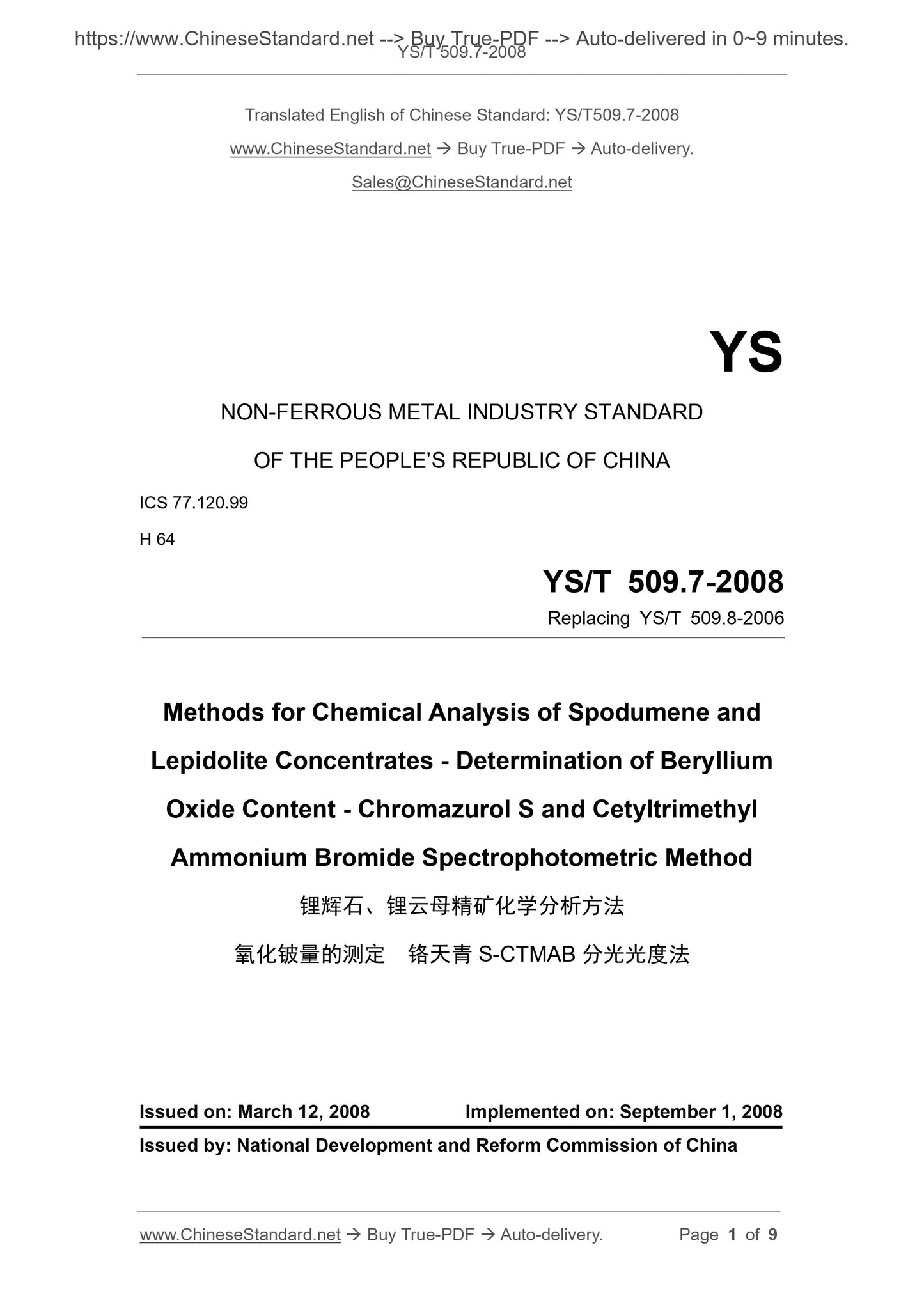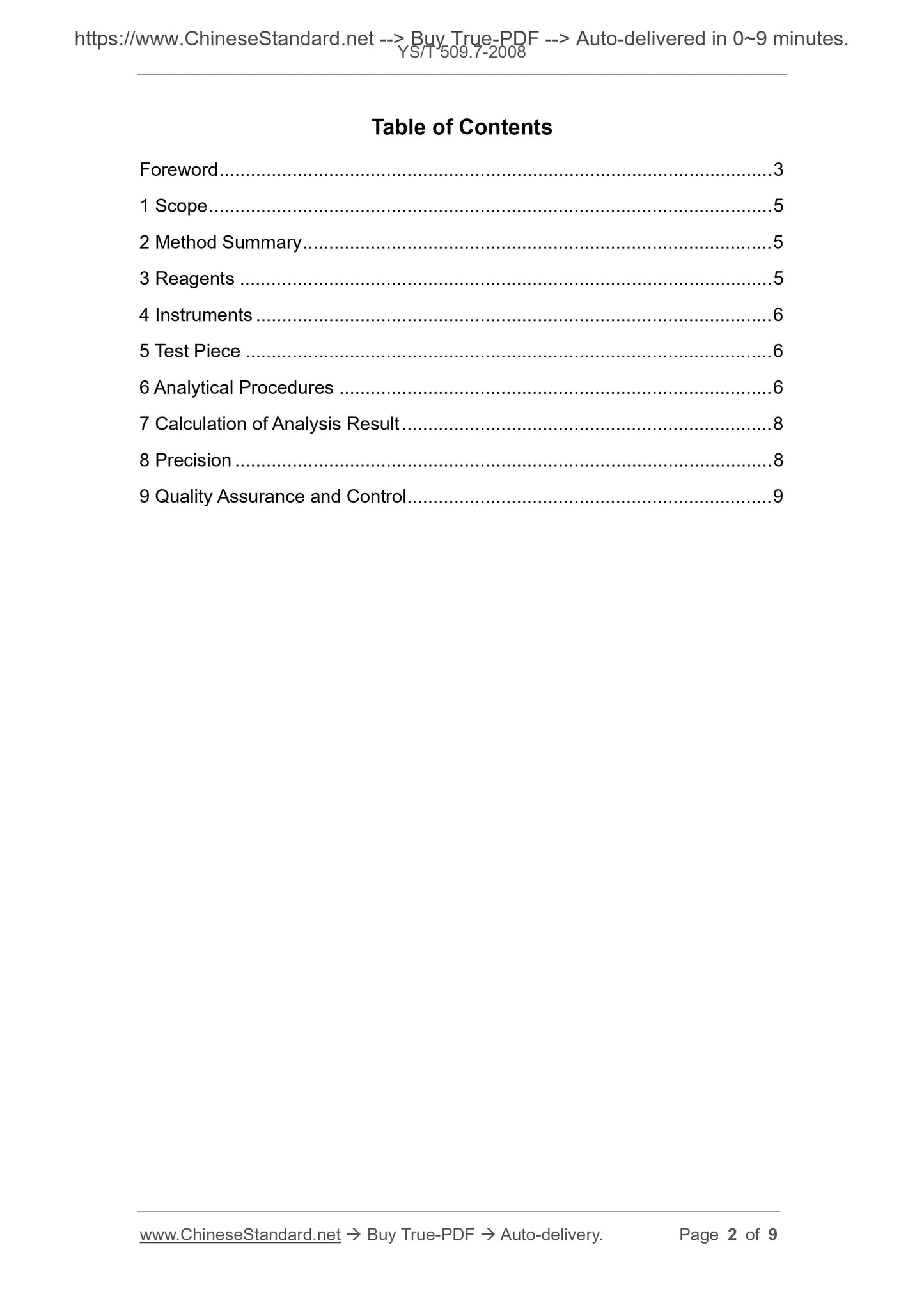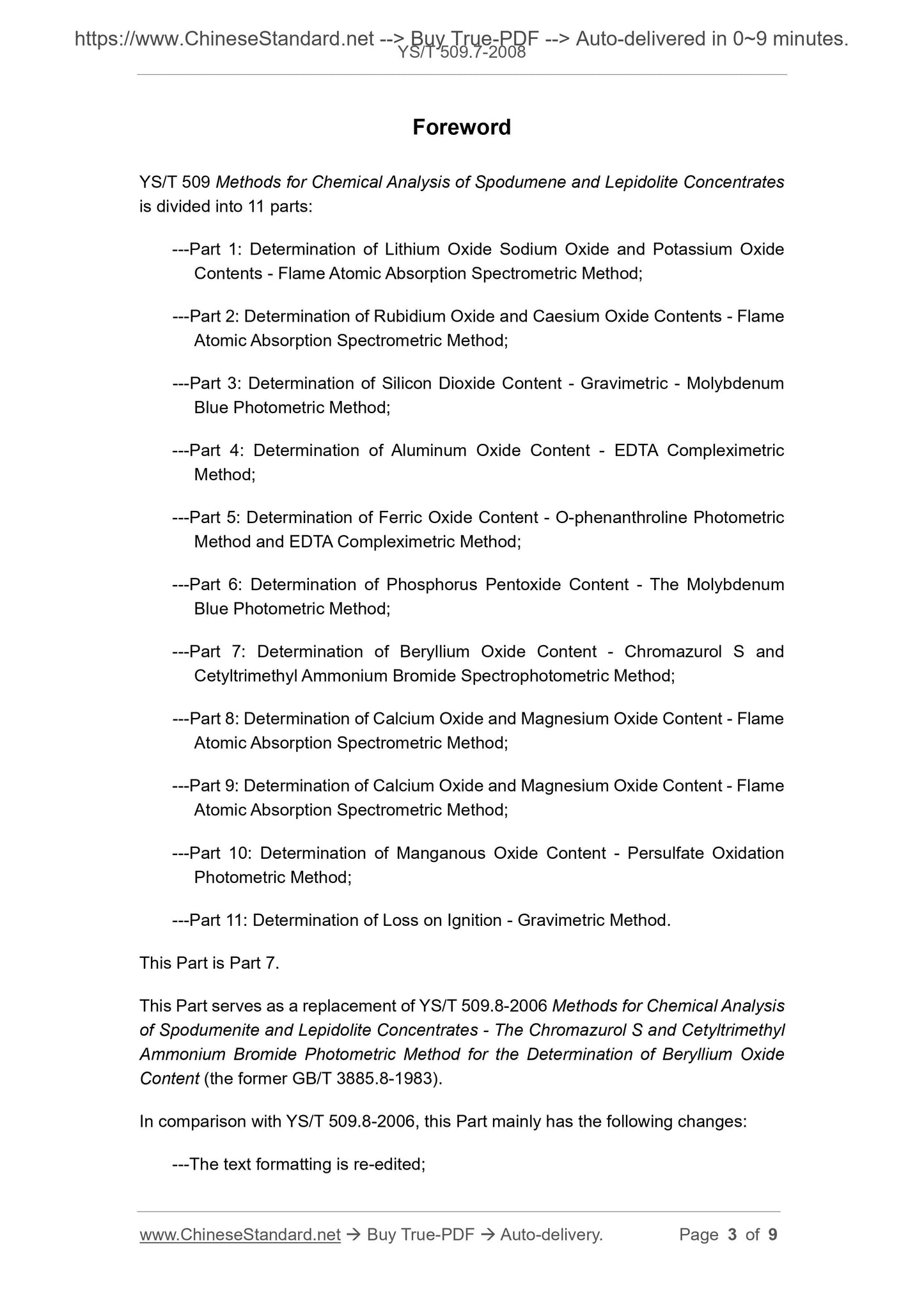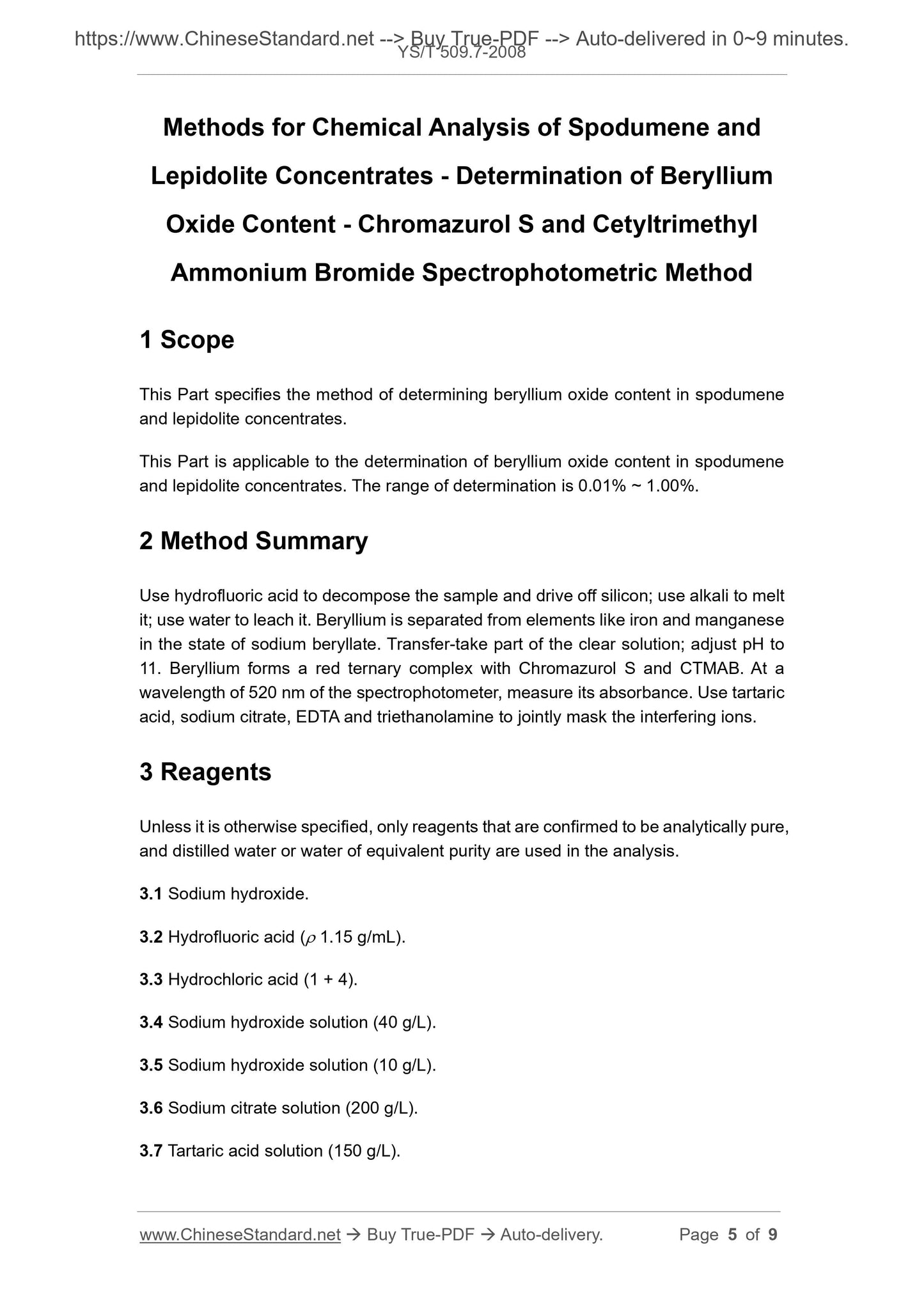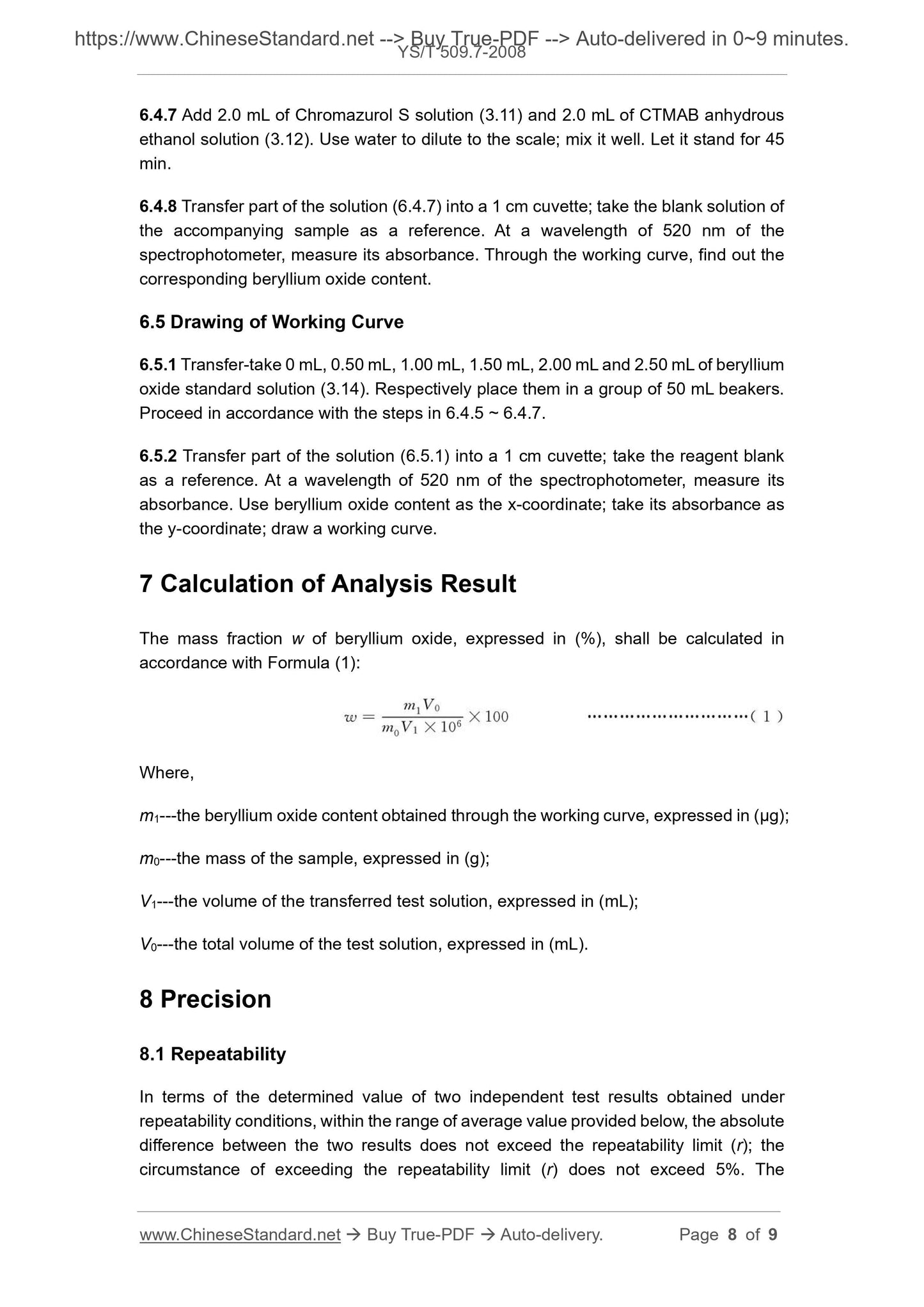1
/
of
5
www.ChineseStandard.us -- Field Test Asia Pte. Ltd.
YS/T 509.7-2008 English PDF (YS/T509.7-2008)
YS/T 509.7-2008 English PDF (YS/T509.7-2008)
Regular price
$150.00
Regular price
Sale price
$150.00
Unit price
/
per
Shipping calculated at checkout.
Couldn't load pickup availability
YS/T 509.7-2008: Methods for chemical analysis of spodumene and lepidolite concentrates. Determination of beryllium oxide content. Chromazurol S and cetyltrimethyl ammonium bromide spectrophotometric method
Delivery: 9 seconds. Download (and Email) true-PDF + Invoice.Get Quotation: Click YS/T 509.7-2008 (Self-service in 1-minute)
Newer / historical versions: YS/T 509.7-2008
Preview True-PDF
Scope
This Part specifies the method of determining beryllium oxide content in spodumeneand lepidolite concentrates.
This Part is applicable to the determination of beryllium oxide content in spodumene
and lepidolite concentrates. The range of determination is 0.01% ~ 1.00%.
Basic Data
| Standard ID | YS/T 509.7-2008 (YS/T509.7-2008) |
| Description (Translated English) | Methods for chemical analysis of spodumene and lepidolite concentrates. Determination of beryllium oxide content. Chromazurol S and cetyltrimethyl ammonium bromide spectrophotometric method |
| Sector / Industry | Nonferrous Metallurgy Industry Standard (Recommended) |
| Classification of Chinese Standard | H64;D44 |
| Classification of International Standard | 77.120.99 |
| Word Count Estimation | 6,635 |
| Date of Issue | 2008-03-12 |
| Date of Implementation | 2008-09-01 |
| Older Standard (superseded by this standard) | YS/T 509.8-2006 |
| Regulation (derived from) | NDRC Notice No. 25 of 2008 |
| Issuing agency(ies) | National Development and Reform Commission |
| Summary | This standard specifies the spodumene, lepidolite concentrates Methods for determination of beryllium oxide. This standard applies to spodumene, lepidolite concentrates Determination of beryllium oxide. Measuring range: 0. 01 to 1. 00%. |
Share
